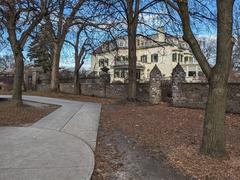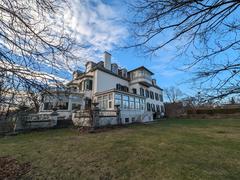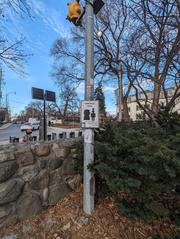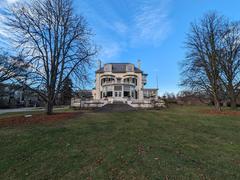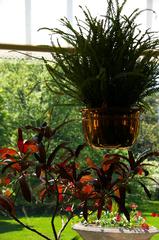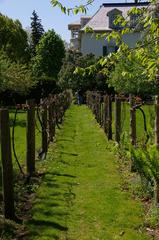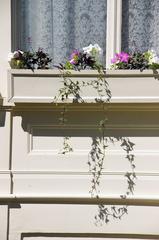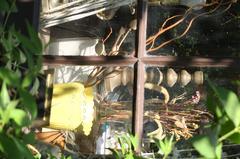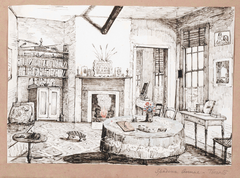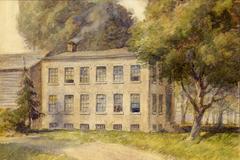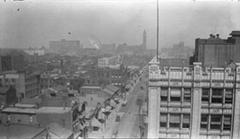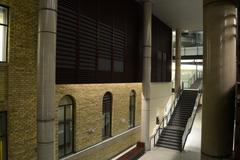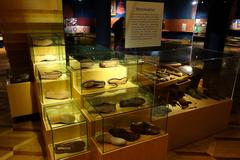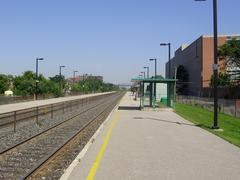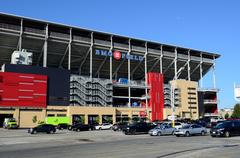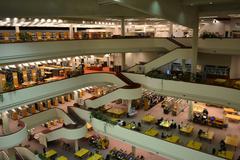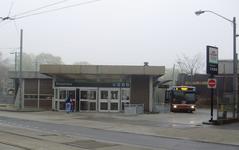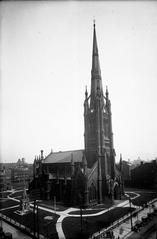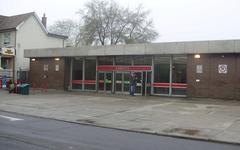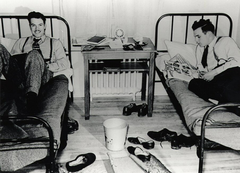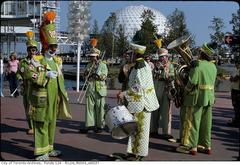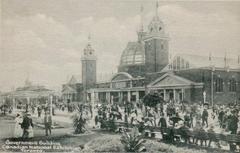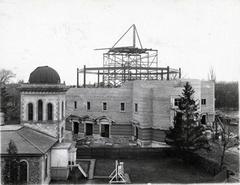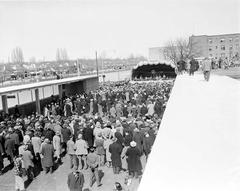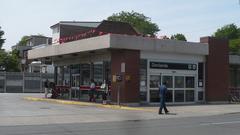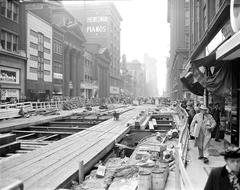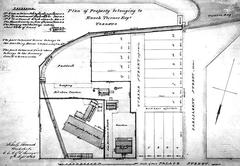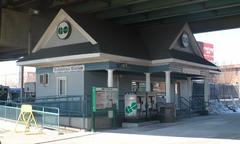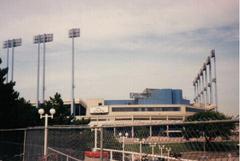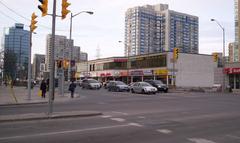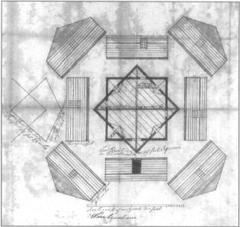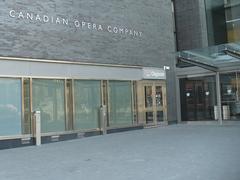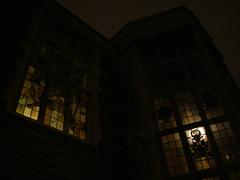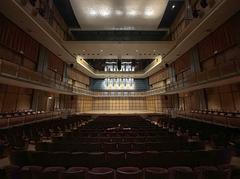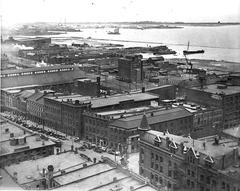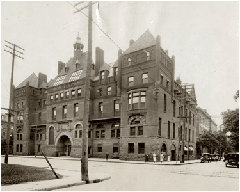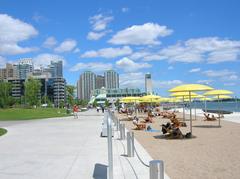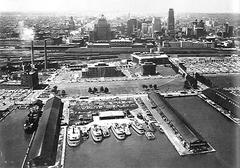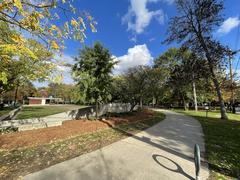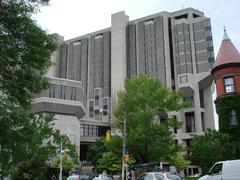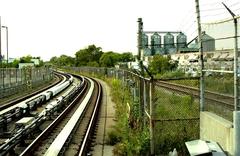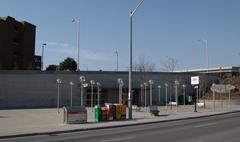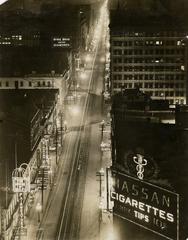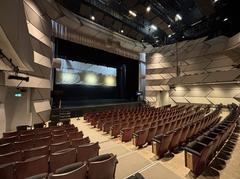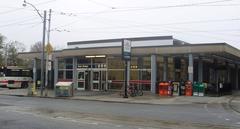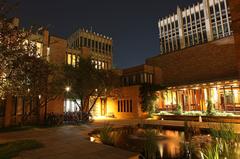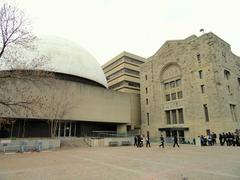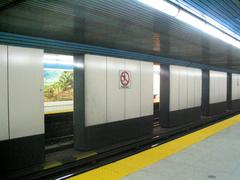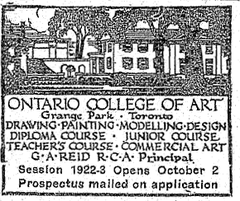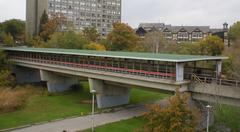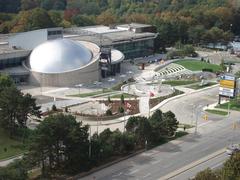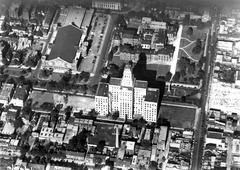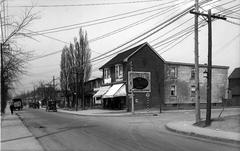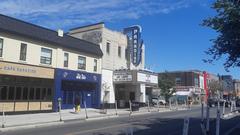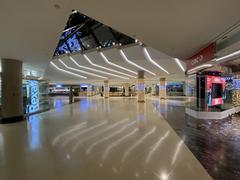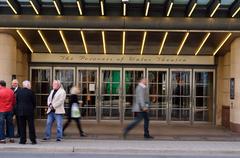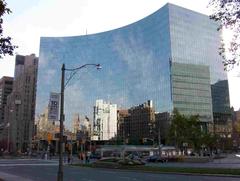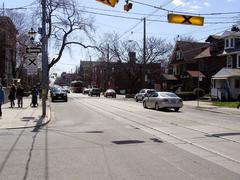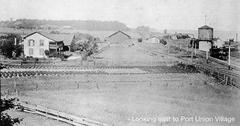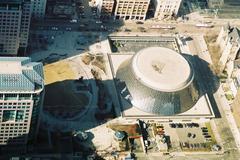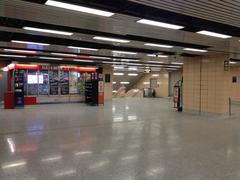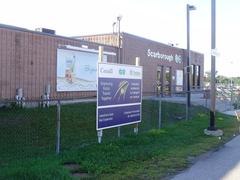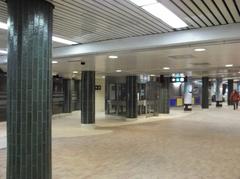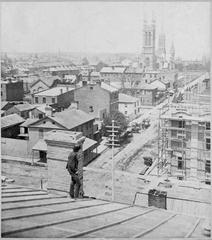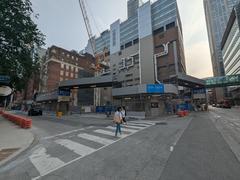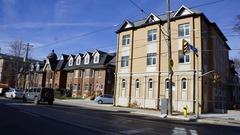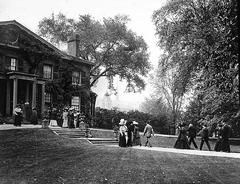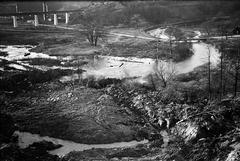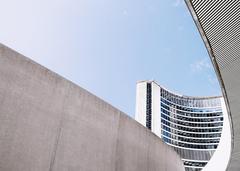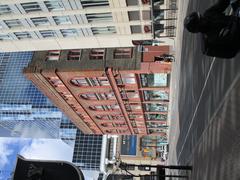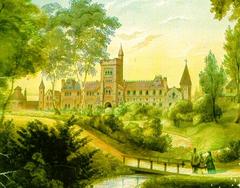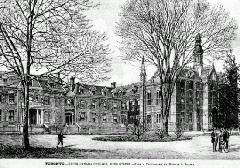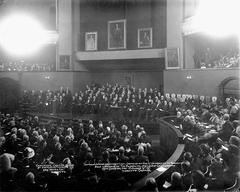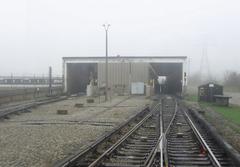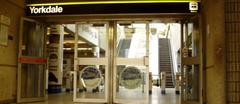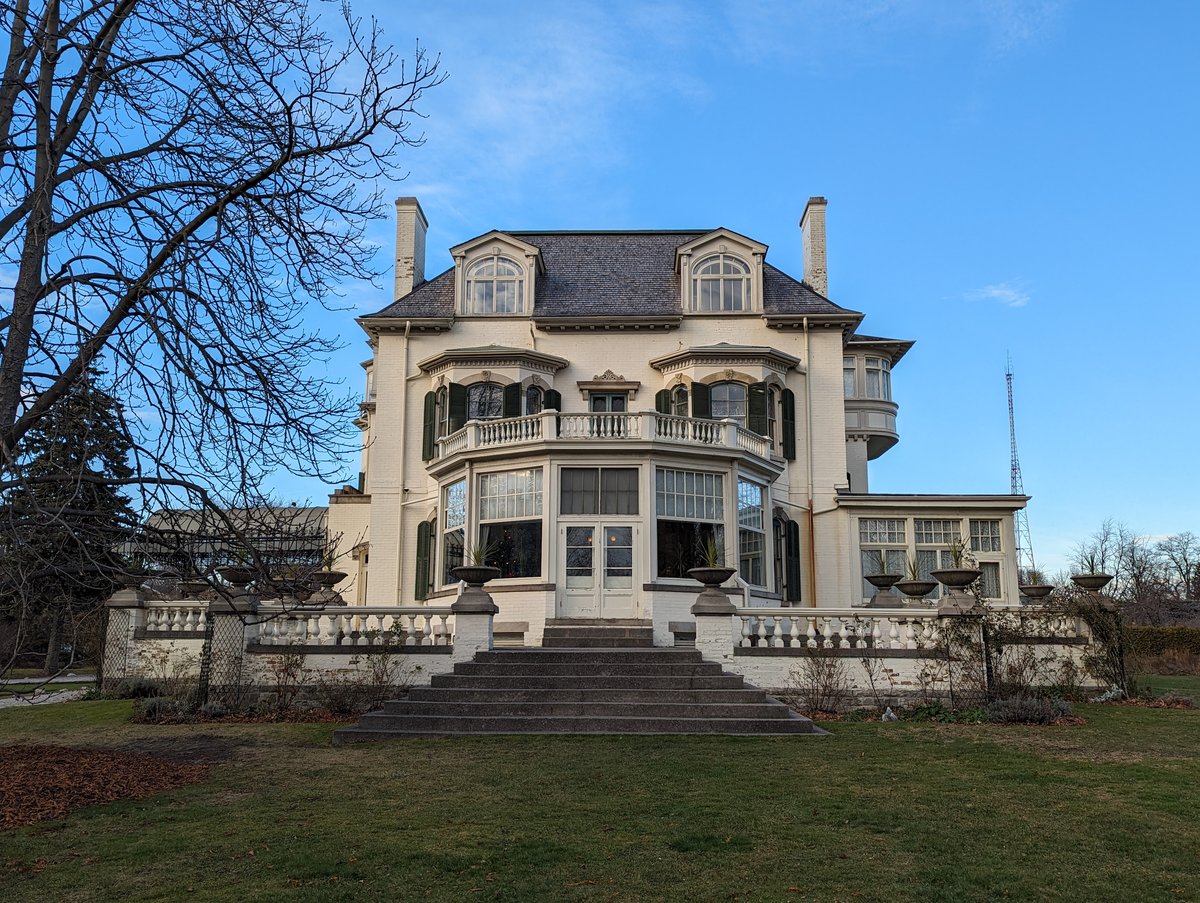
Visiting Spadina House: Hours, Tickets, and Travel Tips
Publication Date: 31/07/2024
Introduction to Spadina House
Spadina House, also known as Spadina Museum, is a cherished historical landmark in Toronto, Canada. Perched atop Davenport Hill, it offers visitors a fascinating journey through time, showcasing the opulent lifestyle of Toronto’s elite from the late 19th to the early 20th century. This meticulously preserved mansion, surrounded by exquisite gardens, provides a unique glimpse into the architectural and cultural evolution of the city. Whether you’re a history enthusiast or a casual visitor, Spadina House promises an enriching and immersive experience. In this guide, we will delve into the rich history of Spadina House, provide essential visitor information, and highlight nearby attractions to ensure you make the most of your visit. From its early beginnings in 1798 to its transformation into a museum, Spadina House stands as a testament to Toronto’s vibrant past (Historic Places Days, The Culture Trip).
Contents Overview
- Introduction
- History of Spadina House
- Early Beginnings (1798 – 1866)
- The Austin Family Era (1866 – 1978)
- Transition to a Museum (1978 – Present)
- Federal Historic Designation
- Architectural and Cultural Significance
- Impact of Historical Events
- Visitor Information
- Visiting Hours
- Tickets
- Accessibility
- Guided Tours and Special Events
- Nearby Attractions
- Photography
- Frequently Asked Questions (FAQ)
- Conclusion
Explore the Rich History of Spadina House: Visiting Hours, Tickets, and More
Introduction
Step back in time and immerse yourself in the opulent lifestyle of Toronto’s social elite at Spadina House. This historic site offers a fascinating glimpse into the architectural and cultural evolution of the city from the 19th to the early 20th century. In this article, we’ll cover everything you need to know about visiting Spadina House, including its history, visiting hours, ticket prices, and nearby attractions.
History of Spadina House
Early Beginnings (1798 – 1866)
The history of Spadina House can be traced back to the late 18th century. In 1798, John Graves Simcoe, the first Lieutenant-Governor of Upper Canada, granted a large, 200-acre piece of land to William Willcocks. Willcocks was involved in the planning and governance of the town of York, which later became Toronto, along with his cousin, the Honourable Peter Russell, who was the President and Administrator of Upper Canada at that time (The Culture Trip).
In 1803, Willcocks’s daughter Phoebe married William Warren Baldwin, an Irish immigrant and doctor. After the death of her aunt Elizabeth, William and Phoebe inherited the land. In 1818, they built the first structure on the property — a two-storey, wood-frame home that sat on the top of Davenport Hill. The estate was renamed ‘Spadina,’ derived from the Ojibwe term “espadinong,” meaning ‘a hill or a sudden rise in the land’ (The Culture Trip).
The Austin Family Era (1866 – 1978)
In 1866, James Austin, a prominent Toronto entrepreneur and founder of the Dominion Bank and Consumers Gas, purchased the 80-acre property for $14,000 at an auction. Austin and his wife, Susan Bright Austin, transformed the estate into an opulent Edwardian residence (Tour by Transit). The original Baldwin home was replaced with a new mansion, retaining the name Spadina.
Between 1897 and 1913, extensive renovations were carried out by Toronto architects W.C. Vaux Chadwick and Eustace G. Bird, along with contributions from the American firm Carrere and Hastings and painter Gustav Hahn. These renovations included the addition of a grand third floor and numerous new rooms, significantly altering the house’s structure (Canada Construct Connect).
The estate’s gardens were also enhanced with many new structures, such as a greenhouse built in 1913, a stucco garage, and a circular driveway. The northern part of the property, now separated from the southern part by a stone pergola dating to 1909, contains service buildings including a stable (1850), a garage/chauffeur’s residence (1909), and a greenhouse (Parks Canada).
Transition to a Museum (1978 – Present)
The house remained in the Austin family for over 65 years, passing through generations until it was donated by Albert Austin’s daughter, Anna Kathleen Thompson, to the City of Toronto in 1978. By this time, only six acres of the original property remained. The donation included most of the house’s contents, such as furnishings, archives, family portraits, and even the kitchen oven (The Culture Trip).
The Spadina Museum first opened to the public in 1984 after two years of extensive safety updates and electrical rewiring. However, after 25 years of wear and tear from visitors, the museum was closed again for renovations. These renovations, which took 10 months to complete, aimed to recreate the house’s appearance in the 1920s, using samples of leftover fabrics, wallpaper, and other contents from the Austin family (Tour by Transit).
When the museum reopened to the public on October 24, 2010, it was decorated in the style of the inter-war era of the 1920s and 1930s. The museum now offers guided tours of the historic 1866 restored mansion and its beautiful gardens, providing visitors with a glimpse into the social, economic, and political lives of those living in that era (Wikipedia).
Federal Historic Designation
In July 2019, Spadina House was designated a National Historic Site by Parks Canada. The designation citation noted that the home was built in 1866 for Toronto financier James Austin and transformed into an opulent Edwardian residence. The well-preserved interiors of Spadina House, with its unique Art Nouveau features, and the expansive surrounding landscape and outbuildings, illustrate the opulent lifestyle of Canada’s social elite in the late 19th and early 20th centuries (Parks Canada).
Architectural and Cultural Significance
Spadina House is a testament to the architectural and cultural evolution of Toronto from the 19th to the early 20th century. The house showcases a range of architectural styles, from Second Empire styles reminiscent of the mid-19th century, the Arts and Crafts Movement, and Art Nouveau to elements of Art Deco, Colonial Revival, and Victorian and Edwardian styles. These styles were added by the Austin family during the 1900s renovations (The Culture Trip).
The estate’s gardens reflect the landscape during the Austin family’s occupation of the house. To the east is a formally-planned kitchen and flower garden in parterre formation, while south of the house, the terrace opens onto a large manicured lawn that culminates in a tree screen at the lip of Davenport Hill (Parks Canada).
Impact of Historical Events
The Spadina Museum highlights the effects of transformative events on the Austin family, such as the First World War, the Great Depression, and societal changes in Canada. The museum’s artifacts feature the family’s contributions to the financial, business, and cultural development of Toronto through an intact collection and archival holdings, music, art, and decorative arts (National Trust Canada).
The museum offers a glimpse into the lifestyle of a wealthy Canadian family that lived for almost a century at Spadina, showcasing different interior design choices and intimate details in the furniture, wallpaper, and even the paintings drawn by the family members themselves (Tour by Transit).
Visitor Information
Visiting Hours
Spadina House is open to the public from Tuesday to Sunday. Visiting hours are from 12:00 PM to 5:00 PM. The museum is closed on Mondays and statutory holidays. It’s advisable to check the official Spadina Museum website for any seasonal changes or special events.
Tickets
Tickets for Spadina House can be purchased at the entrance or online through the official website. General admission is $10 for adults, $7 for seniors and youth (ages 13-18), and free for children under 12. Group rates and guided tour packages are also available.
Accessibility
Spadina House is committed to providing an accessible experience for all visitors. The museum offers wheelchair access to the main floor and gardens. Accessible restrooms are also available. If you have specific accessibility needs, it’s recommended to contact the museum in advance.
Guided Tours and Special Events
Guided tours are available and provide an in-depth look at the history and architecture of Spadina House. Special events, including seasonal garden tours, historical reenactments, and educational workshops, are held throughout the year. Check the official website for the latest updates.
Nearby Attractions
While visiting Spadina House, consider exploring nearby attractions such as Casa Loma, the Royal Ontario Museum, and the historic Annex neighborhood. These sites offer additional opportunities to delve into Toronto’s rich history and culture.
Photography
Spadina House is a popular spot for photography, especially its beautifully maintained gardens and historic interiors. Visitors are welcome to take photos for personal use. For commercial photography or special photo sessions, please contact the museum for permission and pricing.
Frequently Asked Questions (FAQ)
Q: What are the visiting hours for Spadina House? A: Spadina House is open from Tuesday to Sunday, 12:00 PM to 5:00 PM. It is closed on Mondays and statutory holidays.
Q: How much are tickets for Spadina House? A: General admission is $10 for adults, $7 for seniors and youth (ages 13-18), and free for children under 12.
Q: Is Spadina House wheelchair accessible? A: Yes, the main floor and gardens of Spadina House are wheelchair accessible. Accessible restrooms are also available.
Q: Are guided tours available? A: Yes, guided tours are available and provide an in-depth look at the history and architecture of Spadina House.
Conclusion
Spadina House stands as a significant historical and cultural landmark in Toronto, offering visitors a unique opportunity to step back in time and experience the opulent lifestyle of Canada’s social elite during the late 19th and early 20th centuries. Plan your visit today to explore this well-preserved mansion and its expansive gardens. For more information, visit the official Spadina Museum website and follow us on social media for updates and special events.
Sources and Further Reading
- The Culture Trip. (n.d.). Everything You Need to Know About Spadina House. source
- Tour by Transit. (n.d.). Spadina Museum. source
- Parks Canada. (n.d.). Spadina. source
- National Trust Canada. (n.d.). Spadina Museum. source
- Wikipedia. (n.d.). Spadina House. source
- Canada Construct Connect. (2019). Spadina House receives federal historic designation. source
- The Canadian Encyclopedia. (n.d.). Toronto Feature: Spadina House. source
- Historic Places Days. (n.d.). Spadina Museum. source



